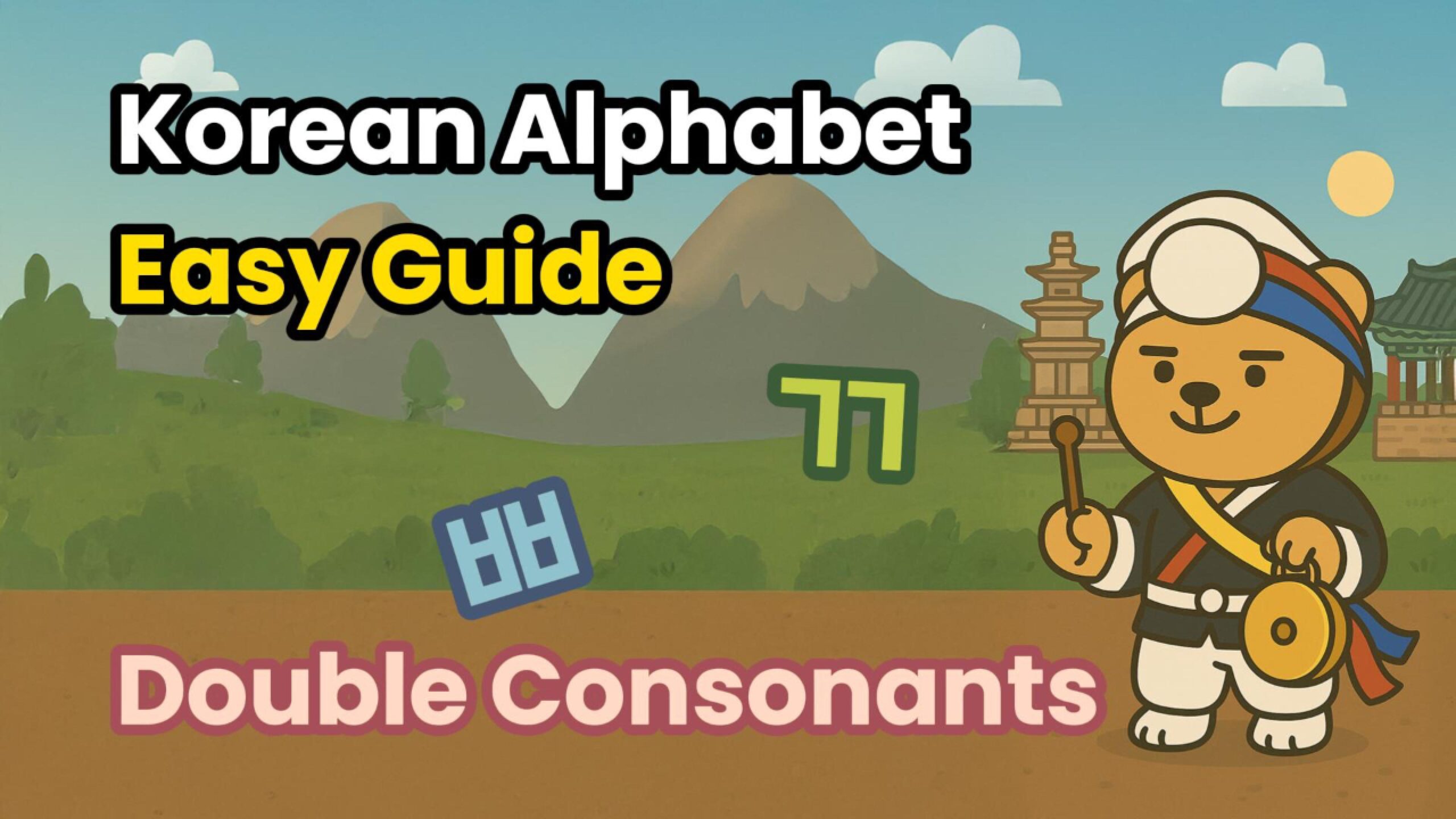Master Korean 🇰🇷 Double Consonants! | Korean Alphabet Easy Guide
Are you learning Korean and want to improve your reading and pronunciation skills? You’re in the right place!
In this post, we’ll help you master the Korean tense (double) consonants: ㄲ, ㄸ, ㅃ, ㅆ, ㅉ with an easy-to-follow guide, practice tips, and examples.
📚 What are Korean double consonants?
Double consonants, also called tense consonants, are unique sounds in Korean that don’t exist in English. They’re stronger and tighter compared to single consonants.
Here’s the list:
-
ㄲ (kk)
-
ㄸ (tt)
-
ㅃ (pp)
-
ㅆ (ss)
-
ㅉ (jj)
🗣 How to pronounce them
✔ ㄲ (kk) → stronger than ㄱ (g/k), almost like a sharp “k” sound
✔ ㄸ (tt) → tense version of ㄷ (d/t), more forceful
✔ ㅃ (pp) → tense version of ㅂ (b/p), pop your lips!
✔ ㅆ (ss) → stronger than ㅅ (s), sharp “s” sound
✔ ㅉ (jj) → tense version of ㅈ (j), think of it as a double “j”
💡 Practice examples
-
ㄲ → 꺼내다 (kkeonaeda) = to take out
-
ㄸ → 따라가다 (ttaragada) = to follow
-
ㅃ → 빨리 (ppalli) = quickly
-
ㅆ → 쌀 (ssal) = rice
-
ㅉ → 짜다 (jjada) = salty
🎯 Why practice double consonants?
-
Improve pronunciation accuracy
-
Sound more natural in Korean
-
Boost your reading fluency
🎶 Let’s practice together!
Practice these sounds out loud, repeat the examples, and listen to native speakers. With regular practice, you’ll master the Korean alphabet and feel more confident speaking!
📌 Summary
✅ Learn ㄲ, ㄸ, ㅃ, ㅆ, ㅉ
✅ Understand pronunciation differences
✅ Practice with real examples
✅ Improve your Korean naturally
📥 Subscribe for more!
If you enjoyed this guide, don’t forget to subscribe for more Korean learning tips, videos, and resources. Let’s make Korean learning fun and easy together!
